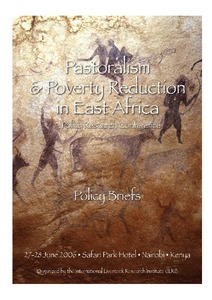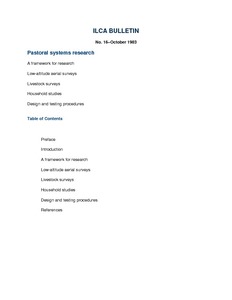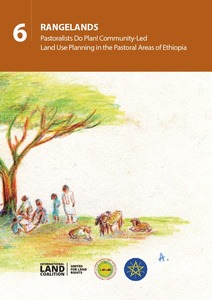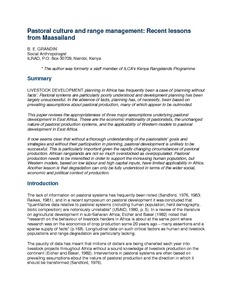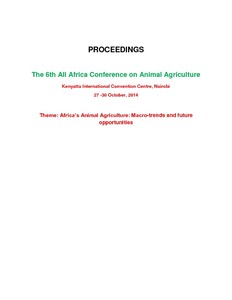Participatory investigation of relative incidence and impact on livelihoods of livestock diseases amongst the Turkana pastoralists in Kenya
Participatory modelling of pastoral and irrigated cropland ecosystems to identify linkages between environmental changes and local stakeholders’ health and well-being
Pastoral systems and cultures in transition
Jan de Leeuw from ILRI reflects on the recent conference in Addis Ababa on the future of pastoralism in Africa. He concludes that pastoral systems in Africa are very much in transition. He notes that external influences on pastoralism (education, religion, land rights etc) are much more visible than in the past; the "full mobility" pastoralism that we knew is changing.
Pastoralism and poverty reduction in East Africa: Policy briefs
Pastoral systems research
Selection of presentations made at the workshop on "Pastoral systems research in sub-Saharan Africa", describing the framework used by ILCA for pastoral systems research (PSR), examining methods used in the descriptive and diagnostic stage of PSR, and showing how the design and testing procedures are followed in practice; with particular reference to low-altitude aerial surveys, livestock surveys & household studies.
Pastoralists do plan! Community-led land use planning in the pastoral areas of Ethiopia
This paper consolidates a set of case studies which document how pastoralists plan land and resource use in pastoral and agro-pastoral areas of Ethiopia. These case studies are drawn from the regional states of Afar, Somali, Southern Nations, Nationalities, and Peoples (SNNP), Oromia, and Gambella. They describe not only why, how, and when pastoralists plan, but also the management and governance structures that control planning processes and the later implementation of the plans.
Pastoral culture and range management: Recent lessons from Maasailand
Reviews the appropriateness of three major assumptions underlying pastoral development in East Africa, viz, economic irrationality of pastoralists, the unchanged nature of pastoral production systems, and the applicability of western models to pastoral development.
Pastoralism in Kenya and Tanzania: Challenges and opportunities in animal health and food security
Pastoralism is used to describe a society that derives majority of their food and income from livestock. This form of farming system is largely practised in the arid and semi-arid lands (ASAL). It is estimated that 70% of the landmass in the Horn of Africa is dry land; in Kenya 80% of the landmass is classified as ASAL, while approximately half of Tanzania consists of dry land. These dry lands support wild resource harvesting, tourism but most importantly livestock rearing.




